
If you are at Tsukiji Fish Market and near the area where the auction takes place, not far to the right of the area is another small temple that serves to protect the Tsukiji Fish Market known as Namiyoke Inari Shrine (which means “protection from waves”).
The reason for the name is because at one time, waves would make it difficult for those in the market because the land was often washed away by the waves.
So, Shinto priests floated an image of Inari Myojin on the water to protect the land and then erected a shrine to praise the gods for protecting the land.
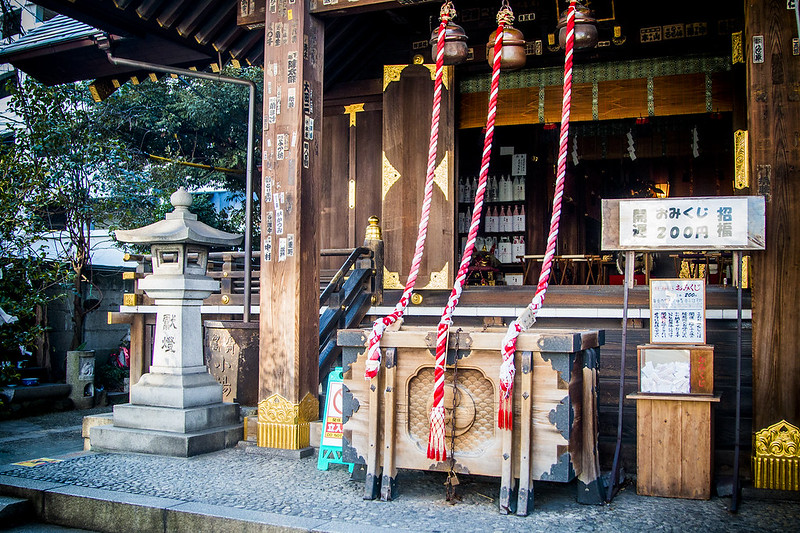


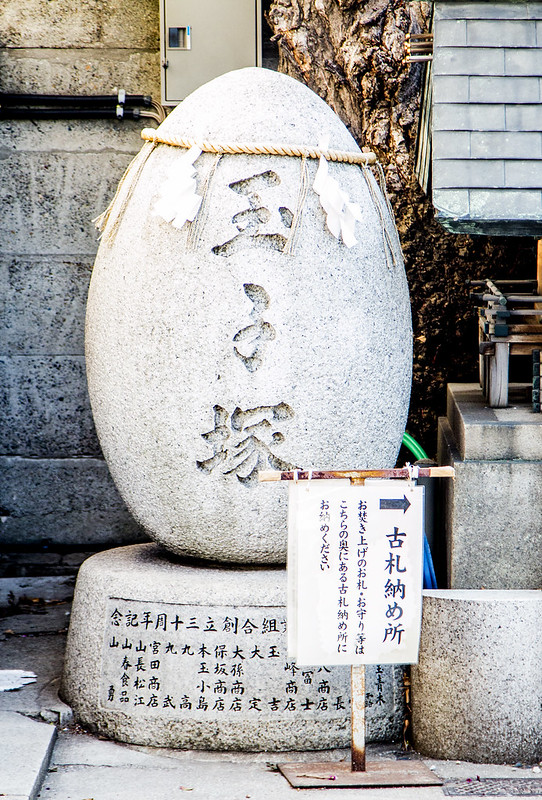
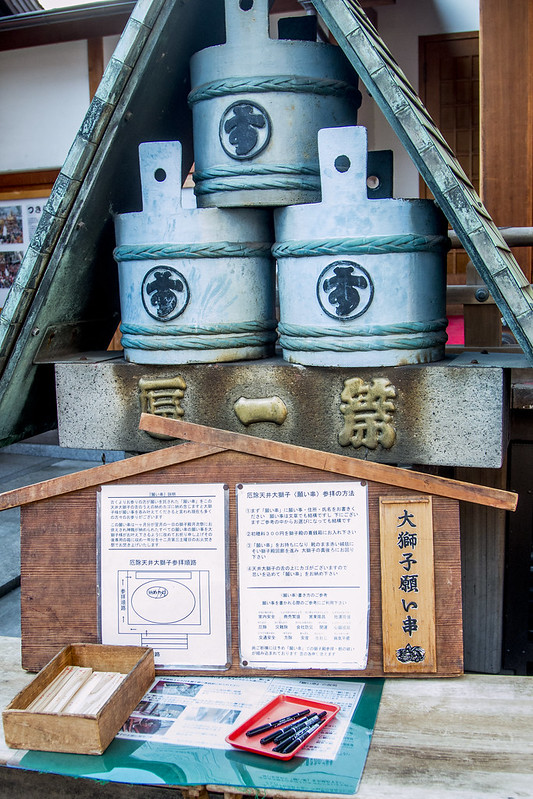
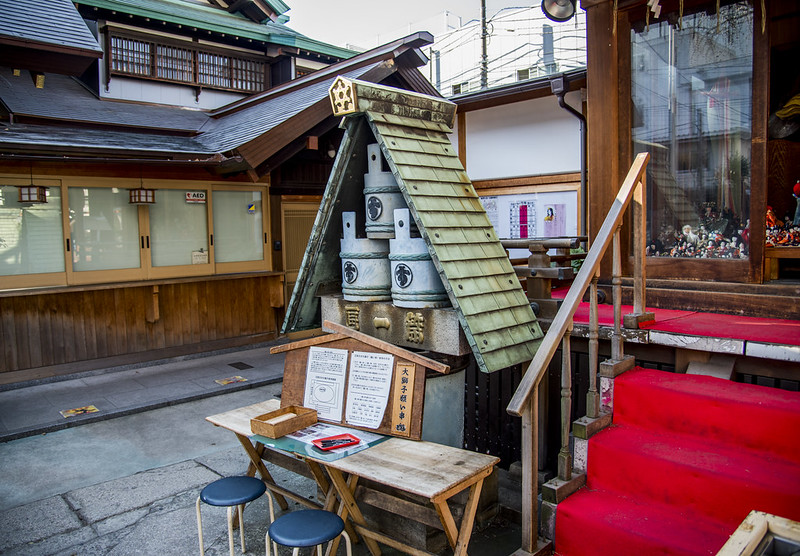
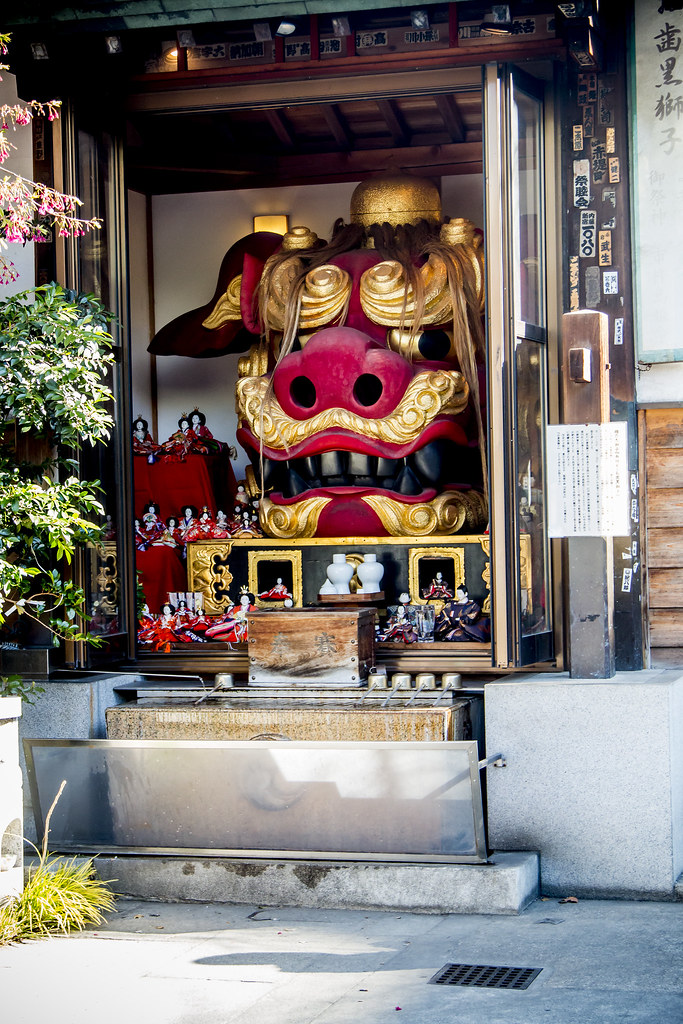
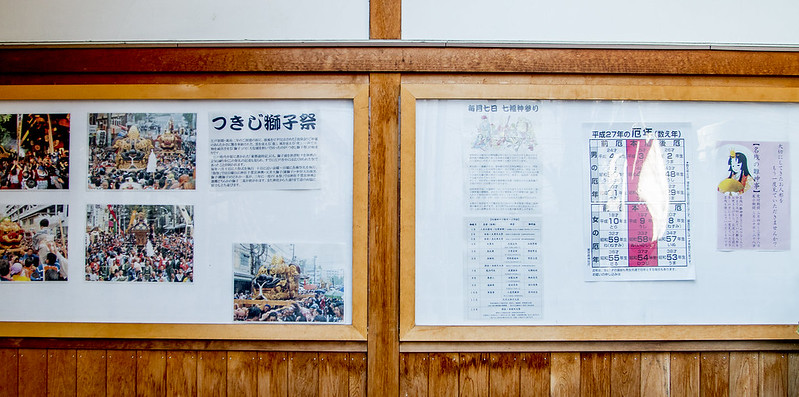
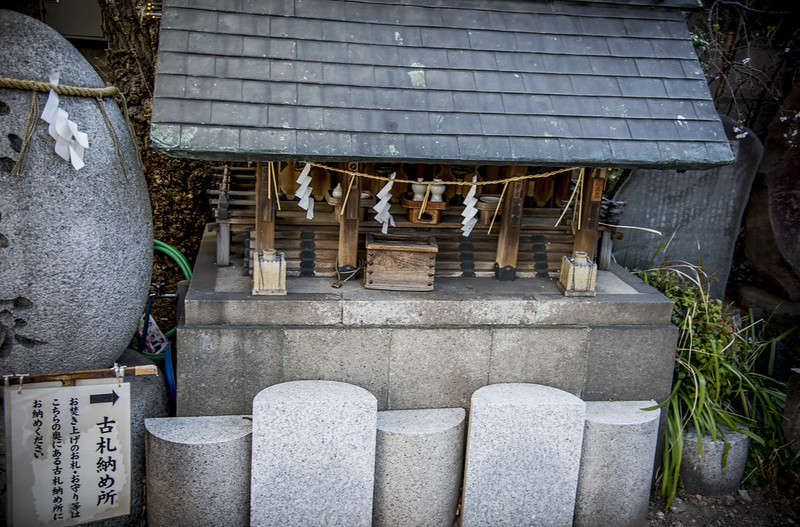
This shrine was built on the water’s edge when part of Tokyo (known back then as Edo) was created from landfill after the Great Fire of Meireki in 1657 (a deadly fire that destroyed 60-70% of the Japanese capital city of Edo and over 100,000 lives were lost).
When the Tsukiji Fish Market was established in the area after the 1923 Great Kanto earthquake, the Namiyoke Inari Shrine became the unofficial guardian for the marketplace and its traders.
Every June, the small shrine is the host of the Tsukiji Shishi Matsuri, a lion festival in which two large crafted lion heads (actually crafted from wood carved back in 1848) are paraded through Tsukji.
In fact, when you visit, you can see a lions head featured, such as the gold/brown male lion’s head and a female gold/red lions head.
Overall, Namiyoke Inari Shrine is worth the visit, considering its very close proximity to the main gate. But probably best to visit during the summer when the trees are green and lush. Otherwise, go in the fall or winter and it can look a bit dreary.
